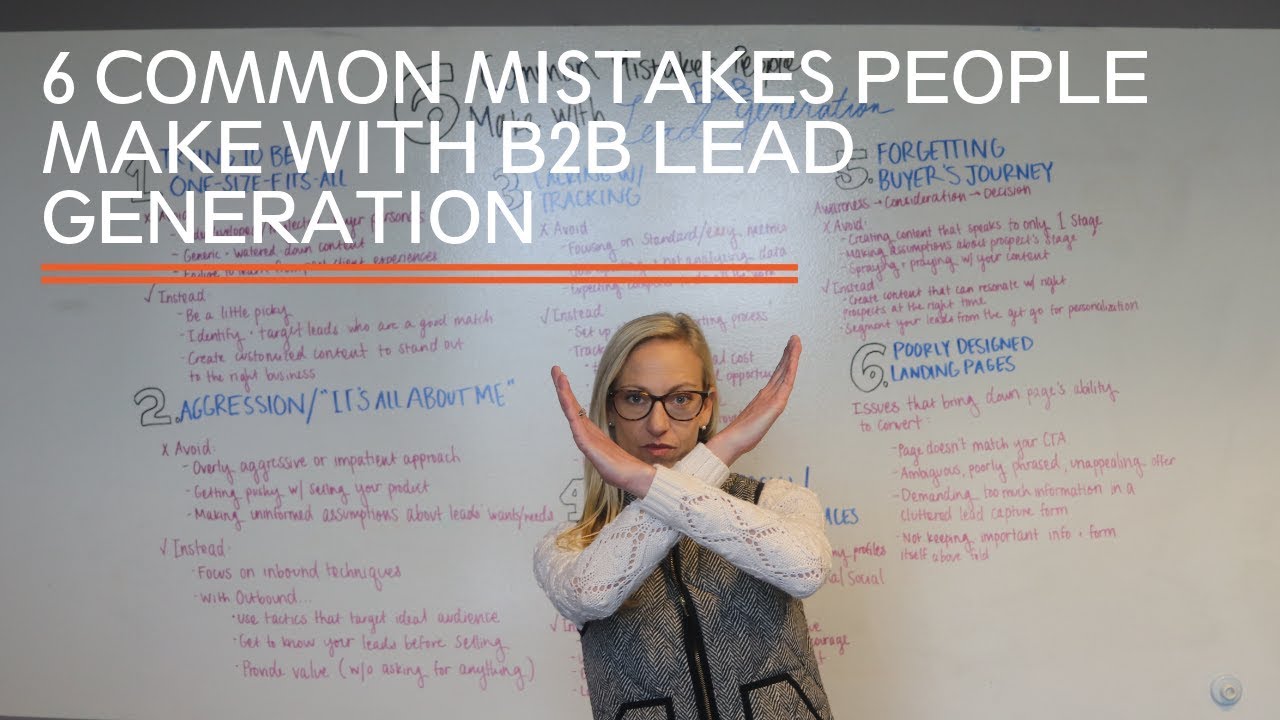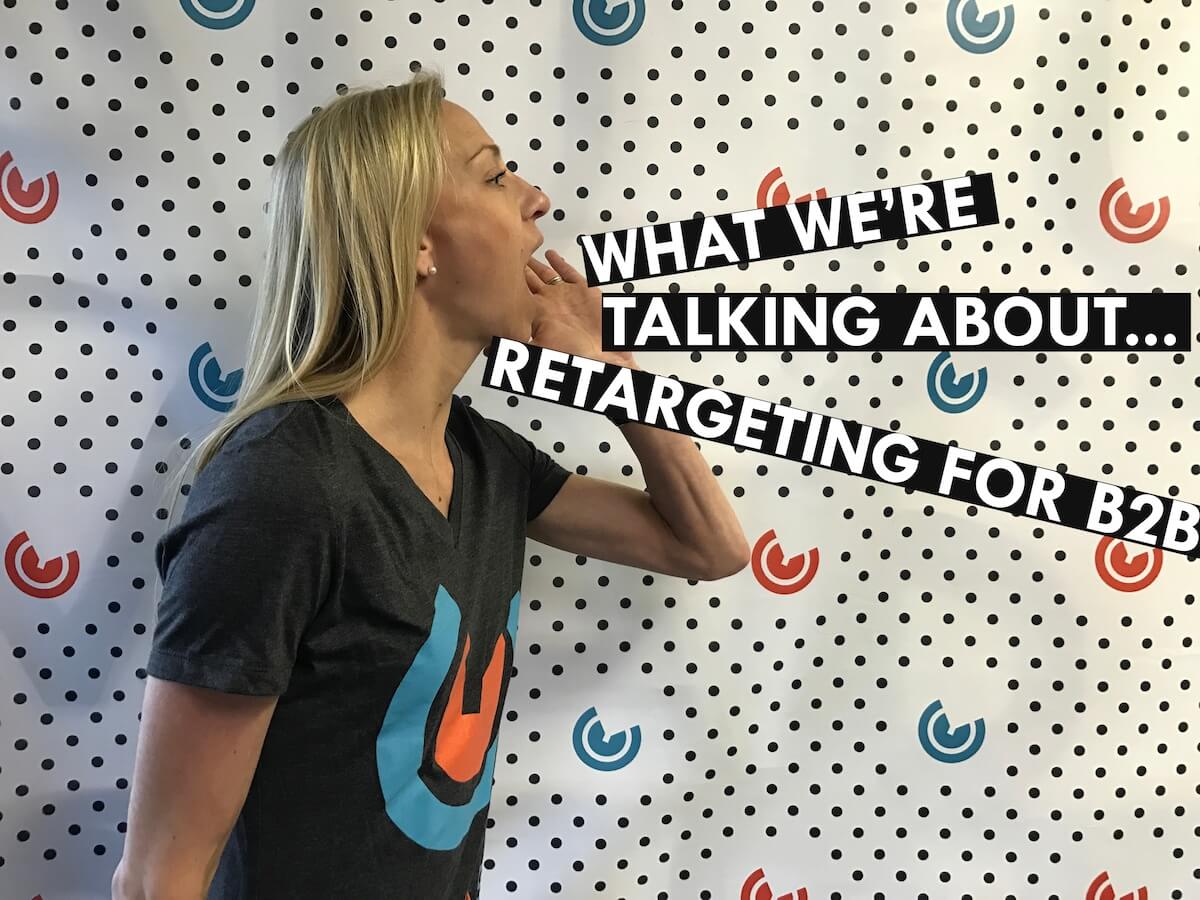6 Common Mistakes People Make with B2B Lead Generation
In any marketing campaign, it is important to understand both sides of the coin- that is, both what to incorporate into your strategy and where all...
I know what I am looking for, and would like to chat.
A team of data-driven marketers obsessed with generating revenue for our clients.
Because the proof is in the pudding.
At Campaign Creators we live by three principles: Autonomy, Mastery, Purpose.
4 min read
![]() Tammy Duggan-Herd
:
7/20/18 7:00 AM
Tammy Duggan-Herd
:
7/20/18 7:00 AM

When it comes to attracting and retaining new leads, no company wants to devote their time to leads that are unqualified or pass up the opportunity to nurture ones that hold great potential. But assessing lead quality and sales readiness on a case-by-case basis can become an exhausting and time-consuming task.
Luckily, there are ways to make this process much more objective and automated— and that's where lead scoring comes in.
This blog post is part of Your Definitive Guide to Lead Nurturing blog series.
Lead scoring is a customizable, rule-based system for ranking leads to distinguish which ones are cold, lukewarm, or red hot, giving your marketing and sales teams a better idea of where to focus their efforts. As a refresher, hotter leads are close to converting, while colder ones require further nurturing or are unprepared/unqualified to make a purchase decision at the current time. (For more lead generation lingo, check out our handy glossary of terms here.)
An automated lead scoring system takes not only the demographics (i.e., industry, job title, company size, gender), but the behavior of your prospects into account when generating their scores on (generally) a 0-100 points system. Behaviors can include everything from visiting your company's site to opening an email to filling out an online form. The challenge lies in determining the guidelines necessary for your personal model.

So, let's take a closer look: what does it take to make a thoughtful and comprehensive lead scoring system? Here are the top 5 absolutely necessary components you should take into account.
Distinguishing between these two kinds of criteria will provide a better understanding of your lead scoring system. Explicit scoring involves using the information directly shared by a lead to gauge their level of qualification; for instance, information provided on a landing page form by a site visitor.
Implicit scoring, on the other hand, is based on tracking the activity that drives a lead towards a sale to infer the lead's level of interest. In the modern marketing world, both the behavior and its tracking is primarily digital— typical tracked actions include most visited pages, emails opens, shared posts, and downloaded content.
By taking both implicit and explicit criteria into account, you can begin to visualize clearly what kind of leads your company is looking to focus on, and which leads from the pool of candidates stand out.
The main function of an automated lead automation model is to assign varying degrees of importance to actions that your leads take. The best way to start organizing these criteria is by compiling a full list of relevant lead behavior across different categories, which can include:

The next step is trickier— you need to rank the actions in each category by order of importance and assign them fitting point values. Is opening an email as significant as clicking through it on a link? Is visiting the home page of your company's site as important as approaching your booth at a trade show? Take time to think through the options to create a more effective and accurate scoring system.
Another aspect of behavioral lead qualification is distinguishing between global and local scoring. Lead scoring on a global level means that the same criteria is applied to every lead, on every occasion. However, in cases where you are interested in looking into a particular lead more closely or collecting data on a more specific level, like the interactive content medium, it can be necessary to create separate scoring rules at the local, or campaign-specific level.
The goal is to make the best use of all of the information you have!
Demographic lead qualification is based on the lead's identity rather than their behavior; while a static and thus less sophisticated element of your model, it is still essential and should not be overlooked. Relevant demographic criteria are details such as:
When deciding what effect a particular demographic feature will have on the lead's score, it can be helpful to consult your buyer personas to understand the general profile of the person or business you would consider a good fit.
While it is good to think positive and focus on making qualified leads' scores higher, being minimally discriminatory can result in an overall decrease in the quality of leads being sent to sales marked as “qualified.” For this reason, it is important to implement negative lead scoring, which deducts points when leads meet certain disqualifying criteria.
From a demographic standpoint, for example this can mean that the lead is in an unfitting industry or holding an unfavorable position (perhaps an associate-level employee rather than a decisionmaker). Behavioral criteria is a different matter; points can be taken off for everything from the lead's decision to move your company's emails to spam to even putting a personal email address into your landing page form instead of a professional one.

Similarly, rules should be established for the degradation of a lead's score over a period of time if their behavior stagnates. This is in no way meant to be a punishment; if your prospect isn’t interacting with your company, knowing when to attempt to re-engage them is crucial.
Finally, as with many processes involving lead management, aligning the goals of your sales and marketing teams is imperative to creating a great lead qualification system. Sales should be involved in the process of establishing scoring criteria, and their opinion can be a valuable contrbution to your definition of a “good” lead.
According to a 2015 study, 46% of B2B marketers have not set up a lead scoring threshold that will automatically alert or route leads to sales. This means that the handoff process is not streamlined, and is eating up precious time and resources for all involved. The solution? Establish a mutually agreed upon threshold to ensure that the right leads are only getting assigned when they’ve met a qualification threshold that your sales team has agreed upon.
In summary, the main components of a well-designed lead scoring system include tiered scoring, multiple types of criteria, and a bit of common sense to top off what should largely be an automated process. Implementation starts with developing your buyer profiles, then research and test, test, test.
Looking to get started on your lead generation strategy? Get our Intro to Lead Generation guide here to learn how to create an effective lead generation campaign to fill your company's pipeline today.

In any marketing campaign, it is important to understand both sides of the coin- that is, both what to incorporate into your strategy and where all...

Saving time and effort all while maximizing value and revenue sounds great, right? Well, that's exactly what a proper lead scoring strategy can do...

When you hear about retargeting or remarketing, you may think about it in a B2C situation, where a banner ad for the site you've been on pops up on...